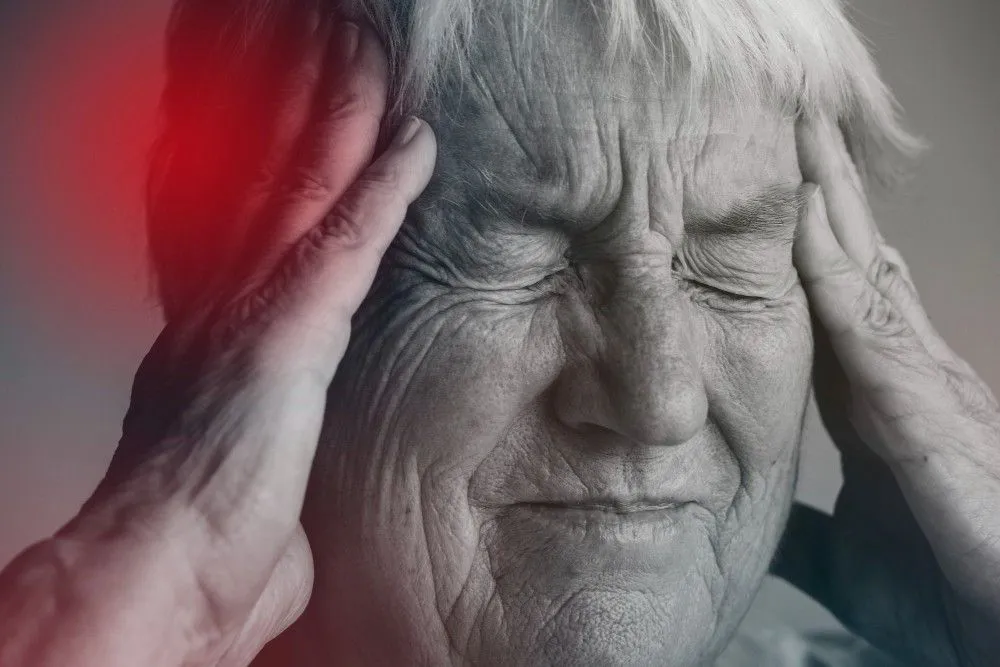Do you know that over 795,000 Americans struggle with stroke every year? A brain bleed, a type of stroke, can occur without warning and often seems very scary and serious. But what does it indicate for survival? Whether caused due to head injuries, high blood pressure, or trauma, a brain bleed is a medical emergency that requires immediate treatment. Though proper treatment can help you recover from it, the common concern that arises is, "What are the chances of surviving a brain bleed?"
Explore the blog to clear all the factors related to a brain bleed!
What Are The Chances Of Surviving A Brain Bleed?
Curious to know, “What is the survival rate for a brain bleed?” The survival rate will depend on the severity and location of the brain bleed, duration between the beginning of the bleeding and treatment, overall health status, and many other factors. If addressed when you experience the first symptom, the chances of living are good.
-
An estimated brain bleed survival rate is approximately 26.7% for 5 years.
-
Overall 30-day survival rate for patients with primary brainstem hemorrhage, a subtype of intracerebral hemorrhage, is 70%.
-
Severe cases, particularly those involving large brain areas and late treatment, might have survival rates under 40% to 50%, and something much lower.
-
The 30-day mortality (death) rate for people with intracranial hemorrhage is up to 40-50%.
-
Subarachnoid hemorrhages have a mortality rate of about 30% to 40%, with many patients struggling with chronic health complications.
If the injuries or traumas impact the whole brain, the chances of survival are zero. Even a person can't live for 5 months. Early diagnosis and treatment can help determine how long a person can survive after experiencing a brain bleed.
Types of Brain Bleeds
-
Intracerebral Hemorrhage
-
Bleeding into the brain tissue.
-
Often occur due to high blood pressure, head trauma, and blood vessel abnormalities
-
Subarachnoid Hemorrhage
-
Bleeding between the brain & its covering
-
Often caused by a ruptured brain aneurysm, head injuries, bleeding disorders, and blood vessel disorders.
-
Subdural Hematoma
-
Bleeding between the brain & its outer lining (called the dura mater)
-
Commonly occur due to head injuries, sudden shaking, and the use of blood thinners
-
Epidural Hematoma
-
Bleeding between the skull & the dura mater (outer brain covering).
-
Usually caused by head trauma, car accidents, and sports injuries.
Factors Affecting the Survival Rate
The following are the key factors affecting the survival rate of a brain bleed:
1. Location and Severity of the Bleed:
-
Bleeding in the critical brain areas or the one that causes extreme intracranial pressure inside the brain tissue and the skull can be more life-threatening.
2. Causes of the Bleed:
-
Causes, like high blood pressure or trauma, may be managed rapidly, while others, such as blood vessel disorders or ruptured aneurysms, can contribute to extreme bleeding or complications.
3. Speed of Medical Treatment Response:
-
The quicker the medical treatment (like medications or surgery to alleviate the pressure), the more the chances of reduced brain damage and survival.
4. Age and Overall Health
-
Younger and healthier people tend to heal much better. Moreover, older adults or those living with chronic health issues such as diabetes or high blood pressure have higher risks of death.
5. Presence of Coma or Having Neurological Damage
-
People who go into a coma or become unconscious for a long period after a brain bleed often have poor chances of living.
Is it Possible to Recover Completely From a Brain Bleed?
It totally depends on the severity and location of bleeding and the amount of swelling caused by the bleeding. In some cases, people recover fully, especially when the bleed is small, the treatment is received quickly, and there is strong rehabilitation support. However, others may survive with several lasting complications.
The long-term effects of brain bleed include:
-
Loss of brain function
-
Stroke
-
Severe side effects of medications
-
Seizures
-
Emotional and personality changes
-
Memory or cognitive impairments
-
Difficulty with speech, communication, and swallowing
-
Weakness or numbness in the body part
-
Inability to move body parts (paralysis)
Apart from this, there is no guarantee that people can live a normal life or perform the same activities they used to do before experiencing a brain bleed. Unfortunately, death can also occur even after treatment. However, the sooner you receive proper treatment, the lower the chances of death. Moreover, rehabilitation programs, including physical therapy, speech therapy, and occupational therapy, may be needed for months or even years to recover well.
What Causes A Brain Bleed: Factors Responsible for it
Well, a broken or leaky blood vessel leads to bleeding from the brain. The following are the potential causes:
-
Long-term high blood pressure (hypertension)
-
Traumas or injuries due to falls, accidents, or hard blows to the head
-
Hardening, narrowing, and thickening of the blood arteries due to the fatty deposits (atherosclerosis)
-
An abnormal lump in the walls of blood vessels (called a cerebral aneurysm)
-
An accumulation of protein inside the walls of brain arteries; this condition is called cerebral amyloid angiopathy
-
Abnormal malformations in the arteries and veins (called arteriovenous malformations)
-
Bleeding disorders such as hemophilia and sickle cell anemia
-
Consuming illegal drugs like cocaine
-
Blood clot
-
Liver diseases
-
Heavy alcohol use and smoking
Symptoms of Brain Bleed
The symptoms might vary based on the nature of the bleeding, the extent to which the brain tissue is infected, and the location of the bleeding. They may be:
-
Sudden and severe headache
-
Dizziness
-
Nausea and vomiting
-
Decreased alertness
-
Lethargy
-
Extreme tingling, numbness, and weakness in the legs and arms
-
Difficulty in speaking, swallowing, and understanding communicated words
-
Sudden seizures
-
Loss of balance, consciousness, and coordination
-
Loss of motor function
-
A problem with breathing
-
Slurred speech
-
Confusion
-
Neck stiffness
-
Vision loss
-
Abnormal heart rate
-
Sensitivity to light
Treatment Options for A Brain Bleed
A brain bleed treatment may vary depending on the location and the severity of the brain bleeding. Doctors will primarily focus on making the blood stop oozing and addressing the causes. The treatment may include:
1. Medications:
Based on the test result, the doctors may prescribe these medications to manage symptoms and causes or prevent the risk of complications:
-
Anti-anxiety medications
-
Antiseizure medications
-
Blood pressure medications
-
Pain relievers
-
Steroid medications (like corticosteroids)
-
Stool softeners (to reduce pressure and straining)
2. Surgery:
When the bleed size is large, the healthcare providers recommend surgery. The following surgeries help stop bleeding and manage the underlying causes:
-
Decompression: Involves making a hole in the skull to remove the accumulated blood or fluid and alleviate pressure.
-
Craniectomy: Surgical removal of part of the skull to allow the swollen brain area to expand and relieve pressure.
-
Craniotomy: Surgical removal and replacement of the part of the skull to reduce pressure and treat the source of bleeding.
In addition, the doctors may help with:
-
Supplemental oxygen through a ventilator.
-
Fluids and nutrients via a feeding tube or vein (intravenously)
-
Close monitoring in the ICU (Intensive Care Unit) for the critical signs to become stable.
3. Long-term Rehabilitation
-
Physical Therapy: Help regain coordination, movement, and strength after damage caused by a brain hemorrhage.
-
Occupational Therapy: Helps regain independence in everyday living activities, such as fine motor skills, cognitive tasks, and essential skills, like grooming, dressing, and eating.
-
Speech Therapy: Supports swallowing abilities, communication, and cognition skills (like reasoning, attention, and memory).
-
Lifestyle Changes: Supports brain healing, prevents future bleeds, and promotes long-term health by managing blood pressure, avoiding smoking, eating a heart-healthy diet, and practicing exercise.
Also Read: What you should know about Brain Surgery?
Potential Complications Of A Brain Bleed
Those complications can include cognitive impairment to even coma or death:
-
Brain damage: Damage to the brain tissue that leads to permanent effects.
-
Cognitive impairment: Causes slowed thinking, difficulty concentrating, and memory loss.
-
Motor deficits: Weakness or paralysis of a leg or an arm.
-
Speech and language problems: Trouble speaking or understanding the language.
-
Vision issues: Causes vision impairment.
-
Seizures: Trigger seizures even after the treatment.
-
Hydrocephalus: Accumulation of cerebrospinal fluid in the brain.
-
Brain herniation: Displacement of brain tissue through a skull's opening due to high pressure from bleeding.
-
Cerebral vasospasm: The narrowing of blood vessels in the brain, which can limit blood flow and lead to further damage.
-
Rebleeding: High chances of brain hemorrhage or brain bleeding.
-
Coma: Severe bleeding can cause a comatose state (a longer state of unconsciousness).
-
Death: Without effective and timely medical treatment, a brain bleed can cause death.
Recovery & Long-Term Outcomes
Here is what you can expect after surviving the brain bleed:
-
Many survivors of a brain bleed face a prolonged recovery with different extents of disability.
-
Patients often spend their days and weeks in intensive care and in regular hospital rooms.
-
Most survivors need extensive rehabilitation, such as physical therapy, speech therapy, cognitive rehabilitation, and occupational therapy.
-
Around 20% of survivors can live independently without any assistance, and 35 to 40% face moderate to severe disability.
Common Long-Term Effects:
-
Physical disabilities: Weakness or paralysis, balance issues, coordination issues, and challenges with fine motor skills.
-
Cognitive impairments: Difficulty concentrating, memory issues, executive function deficits, and low processing speed.
-
Communication difficulties: Aphasia (difficulty understanding language or speaking), difficulty finding words, or slurred speech.
-
Psychological and emotional changes: Anxiety, depression, post-traumatic stress, emotional lability (sudden mood swings), and personality changes.
-
Seizure disorder: Risk of epilepsy that needs anti-seizure medication for a prolonged period.
-
Chronic headaches: Persistent headaches, which are very common.
Factors That May Support Recovery
Here are the factors that can help ease recovery after a brain bleed:
1. Early Medical Intervention
Immediate treatment to stop bleeding, decrease pressure on brain tissues, and stabilize the patient can improve functional outcomes.
2. Consistent Rehabilitation Therapy
Receiving speech, occupational, and physical therapy can help restore strength, coordination, mobility, and communication skills.
3. Manage Underlying Medical Issues
Control diabetes, blood pressure levels, clotting disorders, and heart issues, which lower the risk of complications or recurrence of bleeds.
4. Proper Medication Management
Following prescribed medications (for blood pressure, anti-seizure control, swelling reduction, etc.) helps prevent worsening of symptoms or a health condition of a person.
5. Healthy Nutrition and Hydration
Consume a well-balanced diet that helps boost energy levels, support brain healing, and improve overall recovery.
6. Adequate Sleep and Rest
After a bleed, the brain needs much more rest. Sleeping on time can help repair the damaged brain tissue.
7. Cognitive Exercises
Activities, such as memory tasks, mental challenges, and puzzles, can aid in improving memory, focus, and problem-solving.
8. Psychological and Emotional Support
Get family support, social support, and counseling and treatment to manage your depression, mood changes, and anxiety during recovery.
9. Safe and Calm Environment
Avoiding stressful situations, loud noises, and bright lights lowers mental overload and supports healing.
10. Regular Follow-Up Appointments
Ongoing medical checkups can allow healthcare providers to monitor the progress of the health, make adjustments to the treatments, and detect new symptoms early.
11. Assistance From Caregivers
Getting support with the daily tasks ensures safety and assists an individual in regaining independence at a normal speed.
12. Motivation and participation
Engaging in therapy and recovery efforts actively makes a major difference in recovery and health.
How Can You Improve Your Chances Of Surviving A Brain Bleed?
After you get diagnosed and treated for a brain bleed, you need to consider some lifestyle changes to reduce the complications. The following are the important measures you need to consider:
-
Maintaining your blood sugar levels if you are diabetic.
-
Eating well-balanced food.
-
Lowering cholesterol levels.
-
Regularly practicing some exercises.
-
Limiting alcohol intake.
-
Quitting smoking.
-
Managing blood pressure levels.
-
Losing excess body weight.
-
Wear head protection, like helmets, while riding the vehicles.
-
Avoid blood-thinning medications unless prescribed.
-
Get regular health checkups.
Preventive Tips For Brain Bleeding
You can take several prevention measures to reduce the risks of a brain bleed. However, certain factors like genetics are unmanageable. The following are the proper steps a person can take:
-
Exercise Regularly
-
Control Blood Pressure Levels
-
Follow A Well-Balanced, Nutritious Diet
-
Control Blood Sugar Levels
-
Reduce Stress
-
Lose Excess Body Weight
-
Limit Sugar And Salt Intake
-
Quit Smoking
-
Have Less Alcohol
People with diabetes and heart disease can manage the symptoms of a brain bleed by seeking professional help from a licensed doctor.
Final Thoughts
So, what are the chances of survival after a brain bleed? Well, it depends on several factors, including severity and location of the brain bleed, duration between the beginning of the bleeding and treatment, overall health status, etc. While some cases can recover completely, others can cause chronic health challenges or be life-threatening. Early detection of the symptoms and treatment is crucial to improving the chances of survival.
If you suspect brain bleed symptoms, seek emergency help immediately for improved outcomes.
वारंवार विचारले
How to tell if you have a brain bleed?
You may experience some signs and symptoms, such as sudden or severe headaches, nausea or vomiting, dizziness, numbness, and tingling.
Can you survive a brain bleed?
Yes, you can survive a brain bleed, but the result depends on the severity and location of the bleed, immediate medical treatment, underlying health issues, and overall health.
Is bleeding in the brain fatal?
Yes, it can be. If not provided with treatment quickly, bleeding in the brain can cause permanent brain damage or even death.
What are the chances of surviving a brain aneurysm?
A brain aneurysm causes death within 24 hours in approximately 25% of people. It may also cause death within 3 months because of severe complications in around 50% of people.
Can you die from a brain bleed?
If the bleeding from the brain is fast and extensive, a brain bleed can lead to death in less than 12 to 24 hours.
What does a brain bleed feel like?
A brain bleed may feel like a sudden and severe headache. You may also experience tingling, weakness, or numbness in your legs and arms.
What is the intracranial hematoma survival rate?
Intracerebral hemorrhage comes under the subclass of stroke, which holds the highest disability rate. This condition has a 40%-50% survival rate in less than 30 days.
-User-1754377709.png)
लिहिलेले







